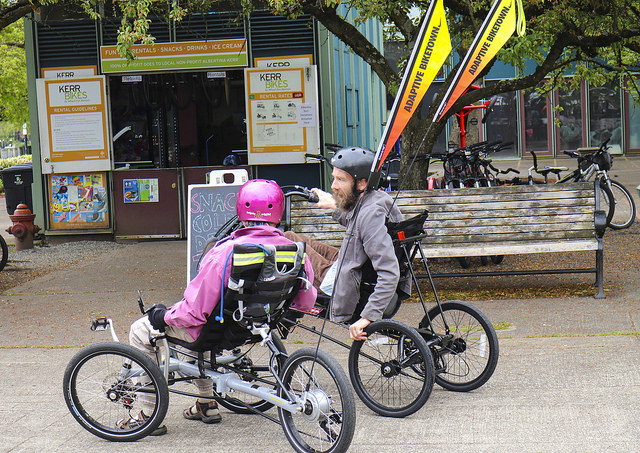Study: E-Bikes Can Help Seniors and People With Disabilities — If They Can Overcome Barriers to Riding
- Date: 11/15/2023
E-bikes can be a critical mobility aid for seniors or people with disabilities — but the first step is getting those…

An exciting part of bikeshare’s growth is the improved access to amenities and resources that it represents for communities, particularly those that were underserved during the concept’s early days.
Of course, there are wrong ways to introduce bikeshare into communities. Whether pursuing a publicly subsidized, dock-based system, or allowing private, dockless companies to address the demand, planners and officials must lead the way with thoughtful policies aimed at harmonizing new services with the overall mobility network. Dockless systems in particular face backlash from wary residents, but there are ground rules cities can employ to get it right, an accomplishment which would reap many benefits for the neighborhoods where the bikes end up.
Another mindset that communities need to adopt in order to maximize bikes as a mobility option is to stop considering non-car travel as “alternative.” Doing so limits the options for how people can access resources. With that in mind, Portland, Oregon is revamping its bike lane design guide to make protected bike lanes standard street infrastructure, baking multiple mobility options into the city’s planning methods and mindset.
As bikeshare options have expanded in rural and urban areas, a significant gap has remained among Native American communities. Lime, a dockless shared-use company (including bikes, scooters, and other modes that they’re dreaming up) is launching in the Reno-Sparks Indian Colony in northern Nevada, which is good news for bringing active transportation to as many people as possible across the country.
Creating bike-friendly communities dovetails into walkability and safe mobility for people with disabilities to get around just the same as those without disabilities. The spread of curb cuts – the ramps leading from sidewalks into street intersections – is one such change that shows how designing mobility for the most vulnerable street users benefits everybody, and can become a standard part of community planning to nobody’s detriment.
Most services are a long way from accomplishing their stated goals of making mobility easier for everybody. Transportation network companies (TNCs) have faced a number of lawsuits surrounding their accessibility, and a new report by New York Lawyers for the Public Interest has deemed these ridesourcing companies “useless” for people who use wheelchairs. Until universal accessibility is considered from the beginning of a product or service’s design – in its infrastructure, perhaps – people with the greatest mobility need will continue to be treated as afterthoughts.
This exists in the bikeshare world, as well. That said, we see the beginnings of cities imagining how they can better include people with disabilities in the cycling community. Portland, Oregon, recently entered its second season of Adaptive BikeTown, and Detroit is now launching Adaptive MoGo with a variety of adaptive bikes for rent. Though still not as readily available as a traditional bikeshare bike, it is a positive sign that the industry is exploring this type of expansion to enable more community members to use bikes for their mobility needs.
Image Credit: Portland Bureau of Transportation, Flickr, CC BY-NC-ND 2.0
Have more mobility news that we should be reading and sharing? Let us know! Reach out to Sage Kashner (kashner@ctaa.org).
Please confirm you want to block this member.
You will no longer be able to:
Please note: This action will also remove this member from your connections and send a report to the site admin. Please allow a few minutes for this process to complete.